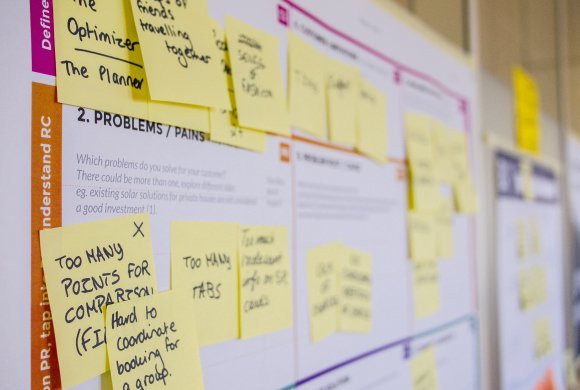There’s a lot of truth behind the saying “people don’t leave jobs, they leave bosses”. You may think this is because they are underpaid or overworked, but it’s actually because they feel undervalued and unappreciated. This is one of the factors that leads to employee disengagement, a phenomenon costing business owners millions of dollars in lost productivity every year.
Gallup has been measuring and reporting on U.S. workplace engagement since 2000 and year after year their findings are consistent. In America, less than one third of the workforce are engaged in their jobs in any given year. According to Gallup, the majority of employees are indifferent, sleepwalking through their workday without regard for their performance or their organization’s performance. These are troubling statistics.
Gallup defines engaged employees as those who are involved in, enthusiastic about and committed to their work and workplace. Most employers would agree that this is exactly what they want to see in their businesses, so why do so few manage to attain an engaged workforce? It could be in part, that they are still thinking old school “that their primary responsibility to their employees is a paycheck” but I think it has more to do with the fact that employers don’t really know what their employees want.
While there certainly was a time when pay was a primary motivator for work well done, it is not so any longer. From Gen X to Millenials (making up the largest portion of today’s workforce as Boomers continue to retire), there is much more to being engaged that simply good pay. Understanding what is important to employees sometimes surprises business owners, but focusing on some of these things builds a dynamic work environment that gives back to the employer in loyalty, productivity, innovation, and growth.
So What DO Employees Want?
To communicate in a meaningful way with their managers
Communication is the basis of any healthy relationship, including the one between an employee and his or her manager. Consistent communication is connected to higher engagement. Gallup found that engagement is highest among employees who have some form (face to face, phone or digital) of daily communication with their managers. When employees attempt to contact their manager, engaged employees report their manager returns their calls or messages within 24 hours. This kind of real time connection and communication results in managers knowing what’s going on with their employees, managing issues as they arise and providing feedback in the moment.
But it’s about more than just performance-oriented communication. Gallup studies reveal that employees who feel as though their manager is invested in them as people are more likely to be engaged. The best managers make an effort to get to know their employees and help them feel comfortable talking about any subject, whether it is work related or not. According to Gallup, 54% of employees who strongly agree that they can approach their manager with any type of question, are engaged. When employees disagree, only 2% are engaged, while 65% are actively disengaged.
A productive workplace is one in which people feel safe enough to experiment, to challenge, to share information and to support one another. In this type of workplace, team members are prepared to give the manager and their organization the benefit of the doubt when something goes wrong. Instead of assuming the worst and moving to negativity as their first thought, engaged employees show a grace and patience that assumes good motives, even when things go bad.
Great managers build genuine relationships with their employees. They understand that each person they manage is different, with different successes and challenges both at and away from work. Knowing their employees as people first, allow managers to accommodate their employees’ uniqueness while managing them toward high performance.
To be part of an ongoing feedback process
Gone are the days when an annual performance review is sufficient for keeping and motivating a strong team. In the old “dump truck” model, managers kept track of employee misdemeanors and performance issues all year long and then dumped them into the employee’s lap and expected them to be motivated by their “performance goals” for the coming year. That kind of performance management leaves employees discouraged, frustrated and demoralized.
A new approach is necessary for employees to feel that developmental conversations are not forced and superficial. When performance management is done well, employees become more productive, profitable and creative contributors. Several things are essential for this to happen.
- Conversations need to be “in the moment”, in real time as things are happening. When someone makes a mistake, doesn’t do it quite right, or needs to be guided in a different direction, managers need to take notice and provide coaching that helps them redirect immediately. These real time learnings form the foundation of trust, confidence and competency. Annual reviews can be part of this process, but they should never be the only time an employee receives performance feedback.
- Expectations need to be crystal clear. Helping employees understand their responsibilities requires more than a written job description that they likely only saw the day they were hired. Great managers don’t just tell employees what’s expected of them and leave it at that; instead, they frequently talk with employees about their responsibilities and progress.
- Goals and accountability need to be built in to the feedback process. Engaged employees are more likely than their colleagues to say their manager helps them set performance goals and holds them accountable for their performance. Gallup surveys show that when employees strongly agree that their managers help them set performance goals, 69% are engaged. When they strongly disagree 53% are actively disengaged. To employees, accountability means that their manager treats all employees fairly and holds everyone to the same standards, allowing those with superior performance to shine.
To focus on strengths over weaknesses
Gallup is probably most known for its research on human behavior and strengths. It’s contention that building employees’ strengths is a far more effective approach than fixating on their weaknesses. According to Gallup, a strengths-based culture is one in which employees learn their roles more quickly, produce more and significantly better work, stay with their company longer and are more engaged. In the current study, a vast majority (67%) of employees who strongly agree that their manager focuses on their strengths or positive characteristics are engaged, compared with 31% of employees who strongly agree that their manager focuses on their weaknesses.
When managers help employees grow and develop through their strengths, they are more than twice as likely to engage their team members. Employees will grow and contribute the most in their areas of strength, and smart managers will place them in jobs that allow them to use the best of their natural talents, adding skills and knowledge to develop and apply their strengths.
To be trusted to do good work
In conducting employee engagement surveys, I have found that almost without fail, being micro-managed by their bosses is one of the biggest frustrations employees express. Employees want responsibilities, but they want to be trusted to do the jobs they have been tasked with doing. Sometimes the hardest part of being a manager is delegating, but employees crave their trust.
Employees want autonomy. Giving them freedom over how they work can actually make them more productive. Daniel Pink, the Washington D.C. based author of Drive: The Surprising Truth About What Motivates Us, says, “Let people figure out the best paths to the goal, rather than breathe down their necks all the time.” This can be hard for business owners. They begin with the assumption that no one can do it as “rightly” as they can, and feel the need to hold on to every detail. Remember that you have grown-ups coming in to work every day, and trusting them to do their jobs will create a culture of confidence and investment. There will be times when things go wrong and when you have to have those dreaded performance improvement conversations, but assuming the best of your employees means you’ll actually have fewer of them.
Just because you’re giving employees the autonomy they crave doesn’t mean they don’t want guidance and feedback. Responsibility is about giving them a chance to succeed, but giving your attention is the other part of the equation that leads them toward success.
To be appreciated
“Too many people leave work every day thinking, ‘My boss doesn’t appreciate me'” says Liz Jazwiec, author of Eat That Cookie!: Make Workplace Positivity Pay Off…For Individuals, Teams and Organizations. “When you feel that your boss doesn’t fully value your work, you start to care a little less. You don’t provide the kind of service you would if you felt appreciated. You don’t make an effort to help your co-workers.”
Feeling genuinely appreciated lifts people up. At the most basic level, it makes them feel safe, which is what frees them to do their best work. Appreciation is one of the most significant indicators of engagement. Employees who know that their work is valued and appreciated come to work with a sense of energy and commitment to doing their best.
Appreciation doesn’t have to be a big costly thing. Small gestures (a hand-written thank you note, an email saying you noticed something they did right, being taken out for lunch and told what a valuable team member they are) can make a huge difference. Managers should make showing appreciation a priority every day; both to the individuals, and to their teams as a whole. This single thing can turn around a culture and a workforce.
To bring innovative ideas to the business
Employees want to bring their ideas to the table. They don’t expect that everything they put forward will be acted upon, but they want to know their innovation is valued. Sometimes asking them to give more thought to the idea and returning with a plan of how they can make it work inspires and motivates them to keep striving to get better and better.
Employees also want opportunities for innovation. Not long ago, Google announced a 20 percent creative time policy, which encouraged employees to work on any innovative ideas they have that were company-related during 20 percent of their hours at work. Alexander Hiam, author of Business Innovation for Dummies applauds this concept. “People need to be given a chance to bring about something new and exciting,” Hiam says. “Just asking people for ideas doesn’t create innovation. It’s a culmination of creativity and leadership.” You might not be able to give your employees this much time to work on side projects, but the point is finding ways you can foster innovation. Use employee brainstorming sessions that allow the staff to work each other to generate fresh ideas; perhaps a prize for the best idea that gets implemented. The how isn’t as important as the fact that you’re giving your employees the opportunities. You never know if one of them will come up with the idea that skyrockets your business to the next level.
While compensation is still important, people want to be fairly paid for the work that they do, these six things are more important to the overall satisfaction and engagement and employee feels, and will cause them to stay over going to a competitor who just offers more money.
Is your team sleepwalking through their days, or are they energetically contributing to your business goals and success? Are there things you can change to engage them more effectively? You may have noticed that none of these things requires a huge financial expenditure. They are things you can shift in your everyday interactions with them, things that will give you payoffs you never imagined possible.




